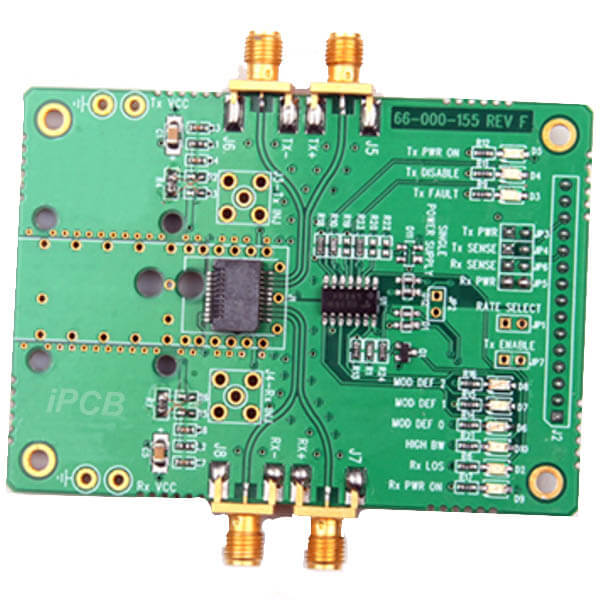As the PCB assembly density of electronic products becomes higher and higher, the size of solder joints that bear the function of mechanical and electrical connection becomes smaller and smaller, and the failure of any solder joint may cause the overall failure of devices and even systems. Therefore, the reliability of solder joints is one of the keys to the reliability of electronic products. In practice, the failure of solder joints is usually caused by the interaction of various complex factors. Different use environments have different failure mechanisms. The main failure mechanisms of solder joints include thermal failure, mechanical failure and electrochemical failure.

Thermal failure is mainly fatigue failure caused by thermal cycle and thermal shock, and the failure caused by high temperature is also included. Due to the mismatch of thermal expansion coefficient between surface mounted components, PCB board and solder, when the ambient temperature changes or the component itself heats up, the solder joint will generate thermal stress due to the inconsistency of thermal expansion coefficient between the component and the substrate, and the periodic change of stress will lead to thermal fatigue failure of the solder joint. The main deformation mechanism of thermal fatigue failure is creep. When the temperature exceeds half of the furnace temperature, creep becomes an important deformation mechanism. For tin lead solder joints, even at room temperature, it has exceeded half of the melting point temperature. Therefore, creep becomes the main thermal deformation fatigue failure mechanism during the thermal cycle.
Compared with the thermal cycle, the failure caused by thermal shock is caused by the large additional stress brought to the components by different temperature rise rates and cooling rates. During thermal cycle, it can be considered that the temperature of each part of the component is completely consistent; Under the condition of thermal shock, due to the influence of various factors such as specific heat, mass, structure and heating mode, the temperature of each part of the component is different, thus generating additional thermal stress. Thermal shock can cause many reliability problems, such as sweat spot fatigue in overload, corrosion failure and component failure caused by cracks at the coating area. Thermal shock may also lead to failure forms that do not occur during slow thermal cycles.
Mechanical failure mainly refers to overload and impact aging caused by mechanical shock and mechanical fatigue failure caused by mechanical vibration. When printed circuit components are subjected to bending, shaking or other stresses, solder joint failure may occur. When printed circuit components are subjected to bending, shaking or other stresses, solder joint failure may occur. In general, smaller and smaller solder joints are the weakest link in the assembly. However, when it connects components with flexible structures such as pins to PCB, the pins can absorb some stress, so the solder joints will not bear much stress. However, when assembling non pin components, especially for large BGA devices, when the components are subjected to mechanical impact, such as dropping and PCB being subjected to greater impact and bending in the subsequent equipment and testing procedures, and the rigidity of the components is relatively strong, the solder joints will bear greater stress. Especially for lead-free soldered portable electronic products, because of their small size, light weight and easy sliding, they are more likely to collide and fall during use. Compared with traditional lead tin solder, lead-free solder has higher elastic modulus and other different physical and mechanical characteristics, which make lead-free solder joints less resistant to mechanical impact. Therefore, attention should be paid to the reliability of lead-free portable electronic products and drop impact. When the welding part is subjected to repeated mechanical stress generated by vibration, it will lead to fatigue failure of solder joints. Even if this stress is far lower than the yield stress level, it may also cause fatigue of metal materials. After a large number of small amplitude and high frequency vibration cycles, vibration fatigue failure will occur. Although each vibration cycle has little damage to the solder joint, cracks will occur at the solder joint after many cycles. With the passage of time, the cracks will also spread with the increase of the number of cycles. This phenomenon is more serious for soldered joints of non pin components.
Electrochemical failure refers to the failure caused by electrochemical reaction under certain temperature, humidity and bias voltage conditions. The main forms of electrochemical failure are: bridging caused by conductive ion pollutants, dendrite growth, conductive anode wire growth and tin whiskers. Ion residues and water vapor are the core elements of electrochemical failure. Conductive ion pollutants left on PCB may cause bridging between solder joints. Especially in humid environments, ion residues can move across metal and insulating surfaces to form short circuits. Ionic pollutants can be generated in many ways, including solder paste and flux residues in PCB manufacturing process, manual operation pollution and pollutants in the atmosphere. Under the combined influence of water vapor and low current DC bias voltage, due to the migration of metal from one conductor to another caused by electrolysis, metal dendrites shaped like branches and ferns will grow. The migration of silver is the most common. Copper, tin and lead are also vulnerable to the influence of dendrite growth, but they are slower than silver dendrite growth. Like other metals, this failure mechanism can lead to short circuit, electric leakage and other electrical faults. The growth of conductive anode wire is a special case of dendrite growth. The ion transport across the insulator and several conductors causes the growth of metal filaments on the insulator surface, which can cause short circuit of adjacent conductive lines. Tin whiskers refer to whisker like single crystals of tin that grow on the surface of tin coating under the action of machinery, humidity and environment during the long-term storage and use of devices on PCBA.